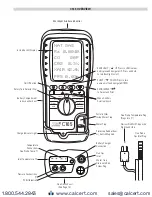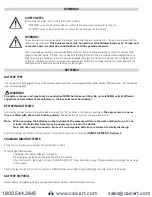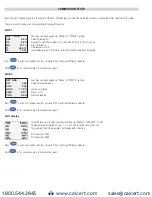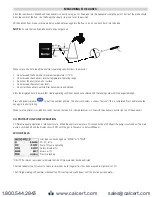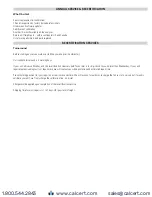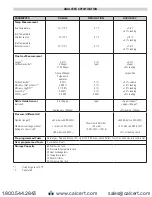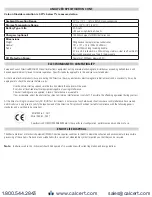
14
PRESSURE/TEMPERATURE TESTING CONT.
Viewing / printing a logged pressure/temp test
Select “MENU” / “REPORT” / “PRS-TEMP” / “VIEW”
Use
◀
/
◀
to select the log number to be printed .
Press
to print the test, (or send to PC via optional Wireless module) .
WARNING!
Before using the C165 to measure the pressure of a gas/air ratio valve, read the boiler manufacturer’s instructions thoroughly . If in doubt contact the
boiler manufacturer . After adjusting a gas/air ratio valve it is essential that the CO, CO
2
and CO/CO
2
ratio readings are within the boiler
manufacturer’s specified limits .
If using larger bore tubing when performing pressure tests:
Push ‘orange’ tube over the rim of the spigot to ensure a gas tight seal .
This may not produce a gas tight seal .
HEAT EXCHANGE INTEGRITY TEST
There are many methods to test heat exchange integrity . One of these is to observe the Excess Air, O
2
and CO readings both before and after the
blower turns on . If the heat exchanger is sealed, your O
2
and CO readings should remain fairly stable . A breach in the heat exchanger may allow fresh
air to be forced into the flue after the blower turns on due to pressure increase in the plenum . The result may be a rise in the measured O
2
in the
stack gas and an increase in Excess Air . In some sealed systems the fresh air drawn in through the breach may reduce the combustion air available
leading to an increase in the CO reading . If either of these situations are present it is probable there is a problem with the Heat Exchanger which may
require additional testing and inspections .
NOTE:
Many cracks are invisible to borescopes or the naked eye, and only open or separate from pressure or temperature changes during opera-
tions .
Rotate dial to “EXCH TEST” Rotate test selector to “EXCH TEST” . Call for heat on the system . Observe and wait for O
2
readings to stabilize .
www.calcert.com
1.800.544.2843
0
5
10
15
20
25
30





